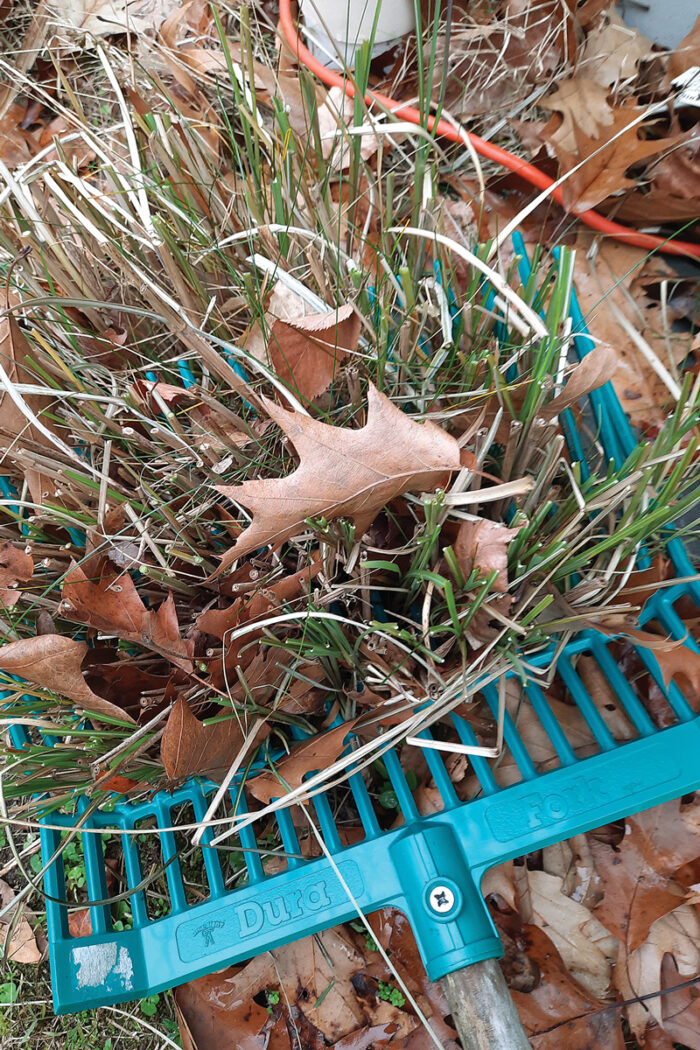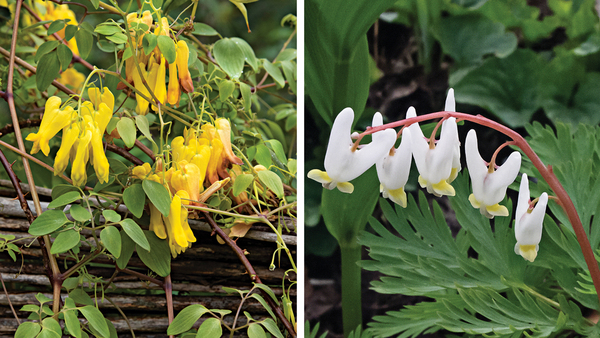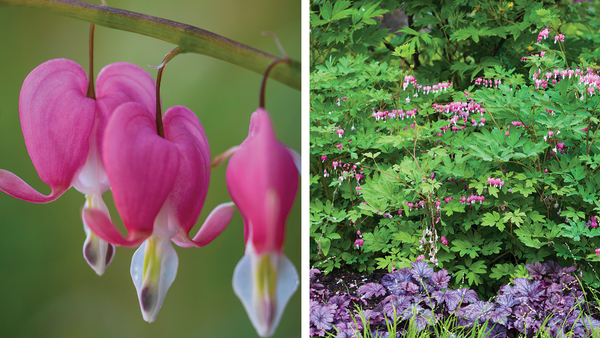
Winning Tip: Remove those stubborn leaves
I still have a “muck rake” (DuraFork) from when I had a horse. I discovered a new use for it when cleaning out my garden. You know when you cut down a large ornamental grass and the leftover leaves are still there? While a leaf rake just makes a mess and only rakes the tops, a muck rake lifts out all the debris in one scoop.
—Jodi Green, Westbrook, Connecticut
Rubberized bib overalls save pants
I spend a lot of time on my knees in the garden—often when the ground is wet—tucking seeds and plants into the soil or weeding and trimming things back. I begin those endeavors either sitting or kneeling on a nice spongy pad, but it isn’t long before I find I have left the pad behind as I have crawled across the garden bed to reach into tighter areas. As a result, I often end up with the knees of any pants I’m wearing becoming wet and stained, and eventually worn out. I’ve solved this by purchasing a pair of roomy rubberized bib overalls that I pull up over my pants. Now my pant legs are dry and stain free.
—Esther Davis, Salem, Virginia
Extra bird perches
I don’t have many evergreens near my bird feeders that waiting birds can use as additional perches, so I attached branches to my hanging poles. These look nice in the yard and offer more birds places to hang out while waiting their turn at the feeders.
—Jodi Green, Westbrook, Connecticut
DIY “copper” plant labels
I love those copper plant labels, and I have found a way to make my own imitations: Take an insulation support wire (you can use any wire, but I used these because I already had them and they were already straight) and wrap it around two corners of a wooden block of the desired label width. Wrap a piece of copper foil tape around the back. Remove just enough of the tape backing to expose the sticky side so that you can secure the tape, but leave the backing on in the middle to add stability to the label. Write the plant name on the tape with a permanent marker. Your label is now ready for the garden.
—Laura Sodders, Athens, New York
Divide bleeding hearts in spring
In early spring when my bleeding hearts are no more than 6 inches tall, I divide the root mass of mature plants (with a crown diameter at least 6 inches) in two with a spade or sturdy trowel and transplant the root section into damp soil. If spring rains are plentiful, no extra care is needed. If the transplant wilts, I shade it with an inverted plant pot for one or two days.
—Mary Crum, Holland, Pennsylvania
Fine Gardening Recommended Products

A.M. Leonard Deluxe Soil Knife & Leather Sheath Combo
Fine Gardening receives a commission for items purchased through links on this site, including Amazon Associates and other affiliate advertising programs.


















Comments
Log in or create an account to post a comment.
Sign up Log in